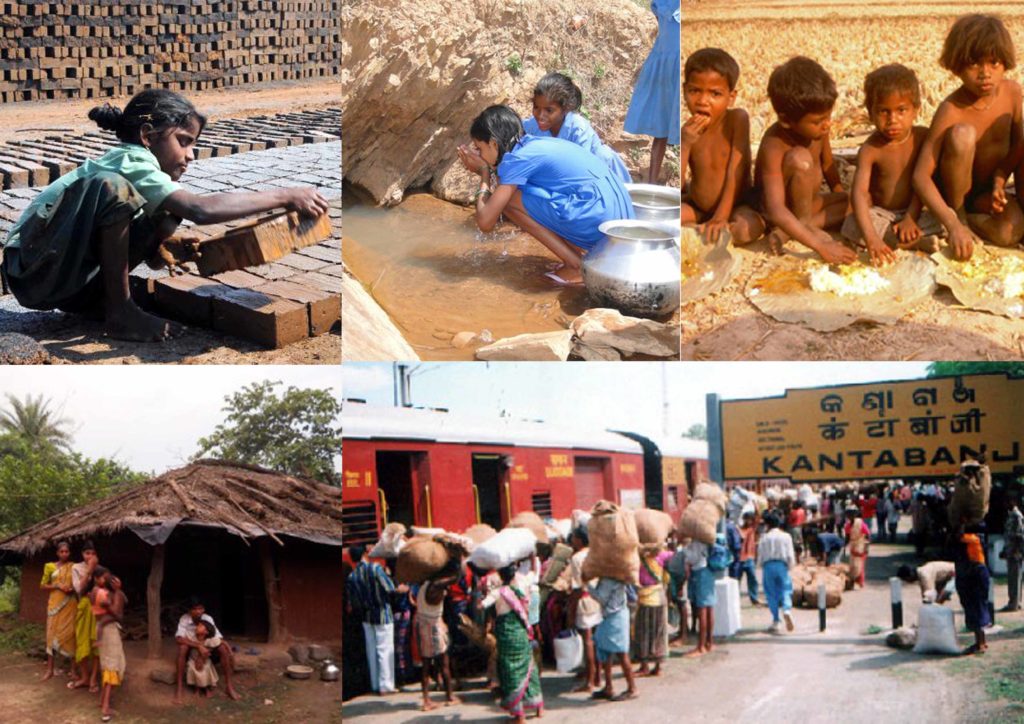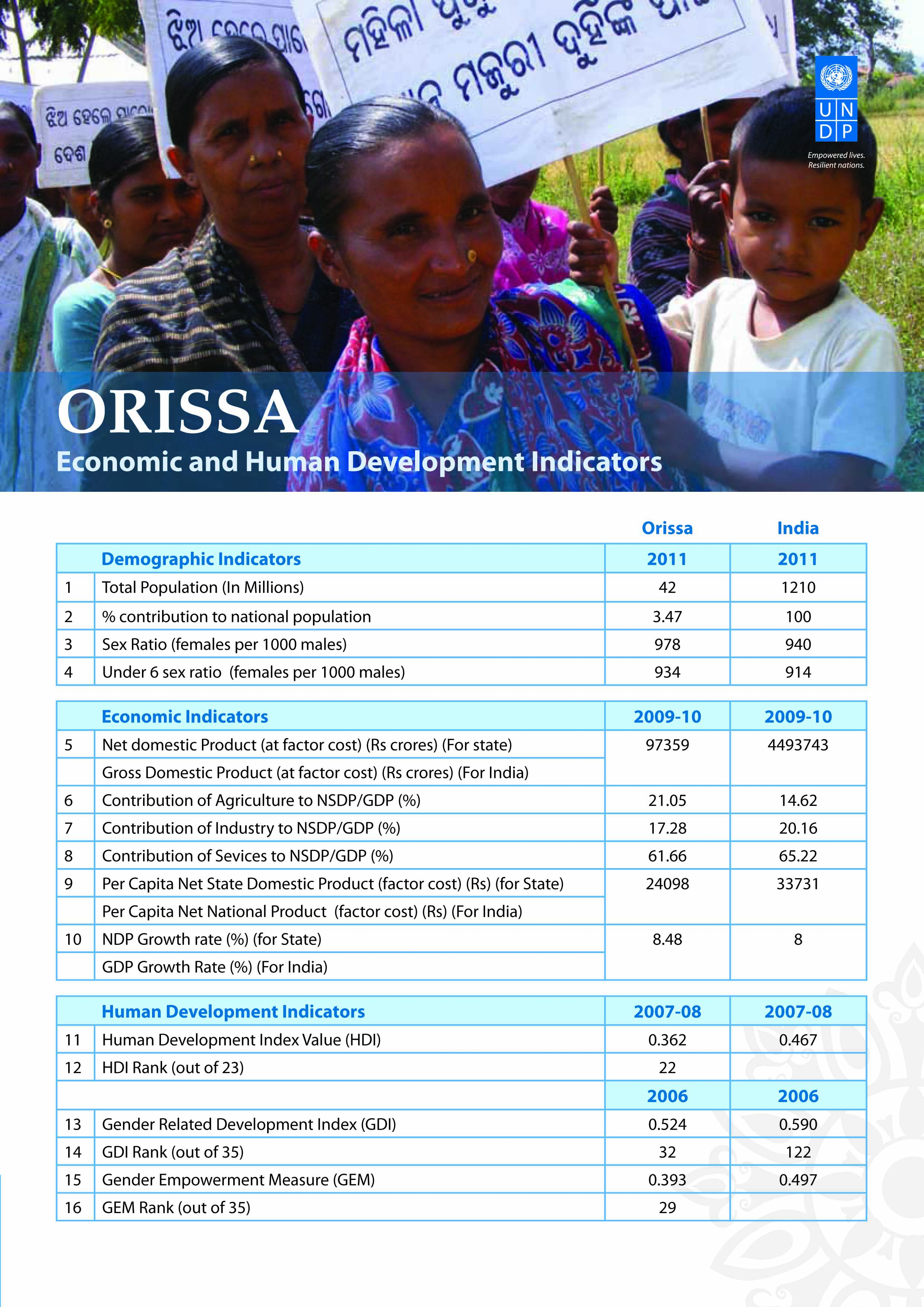Poverty and its Measurement
Don’t ask me what poverty is because you have met it outside my house. Look at the house and count the number of holes. Look at my utensils and the clothes that I am wearing. Look at everything and write what you see. What you see is poverty.
– A poor man, Kenya, 1997.
Poverty is a general scarcity or the state of one who lacks certain amount of material possessions or money. But poverty is often defined by one -dimensional measures, such as income. But no one indicator alone can capture the multiple aspects that constitute poverty. Poor people themselves describe their experience of poverty as multidimensional-lack of food, bad housing and sanitation, low education, poor health, social exclusion and much much more.
Human Development Index (HDI)
The HDI is composite statistic of life expectancy, education and per capita income. The index is used by United Nations Development Programme (UNDP). In 2014, Norway was ranked No-1 with a HDI of 0.944 and India was ranked 130 with a HDI of 0.609.
Multidimensional Poverty Index (MPI)
The MPI comprises of three dimensions- education, health and living standards. It has total of 10 indicators -2 for education, 2 for health and 6 for living standards.
Poverty in Odisha
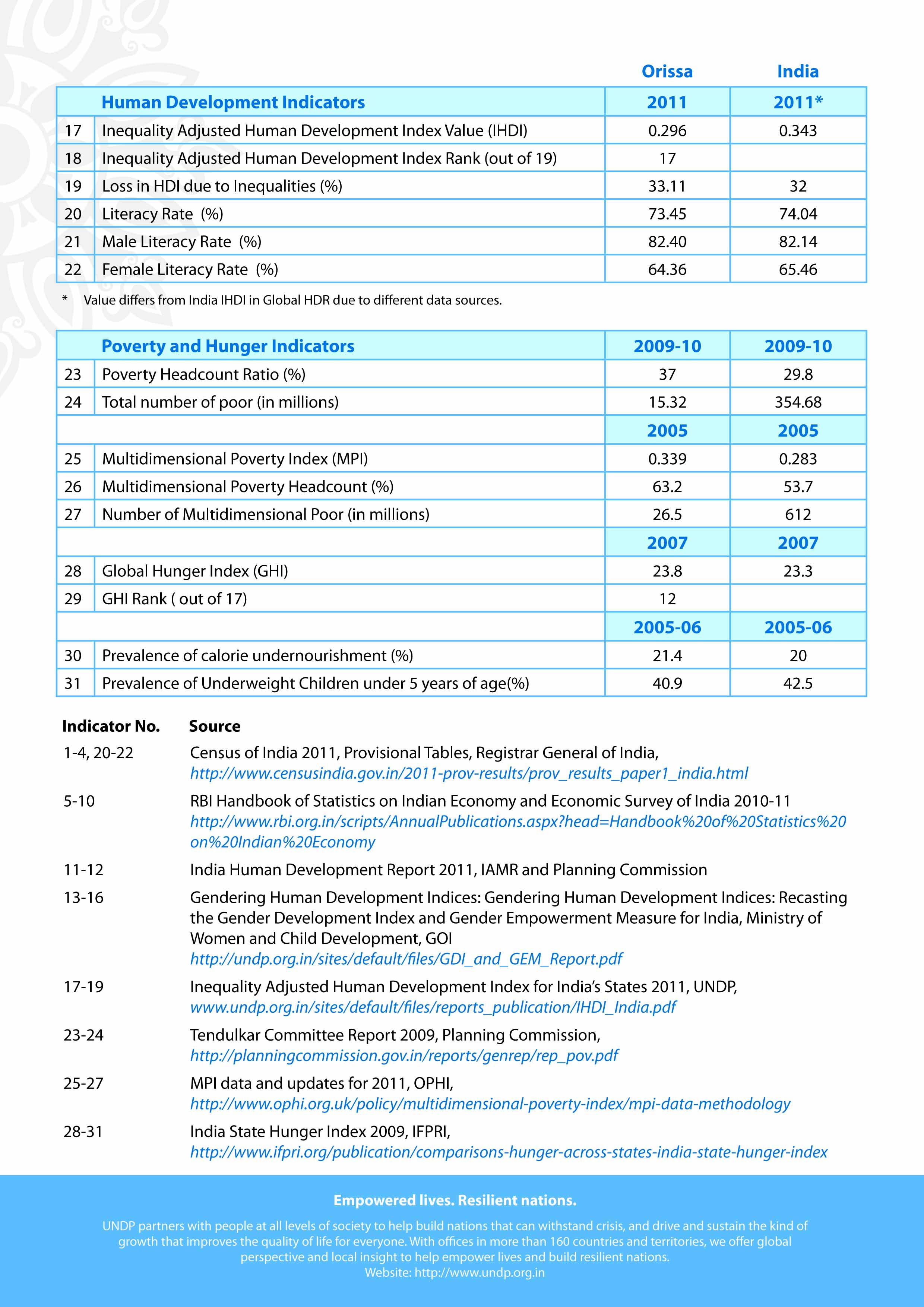
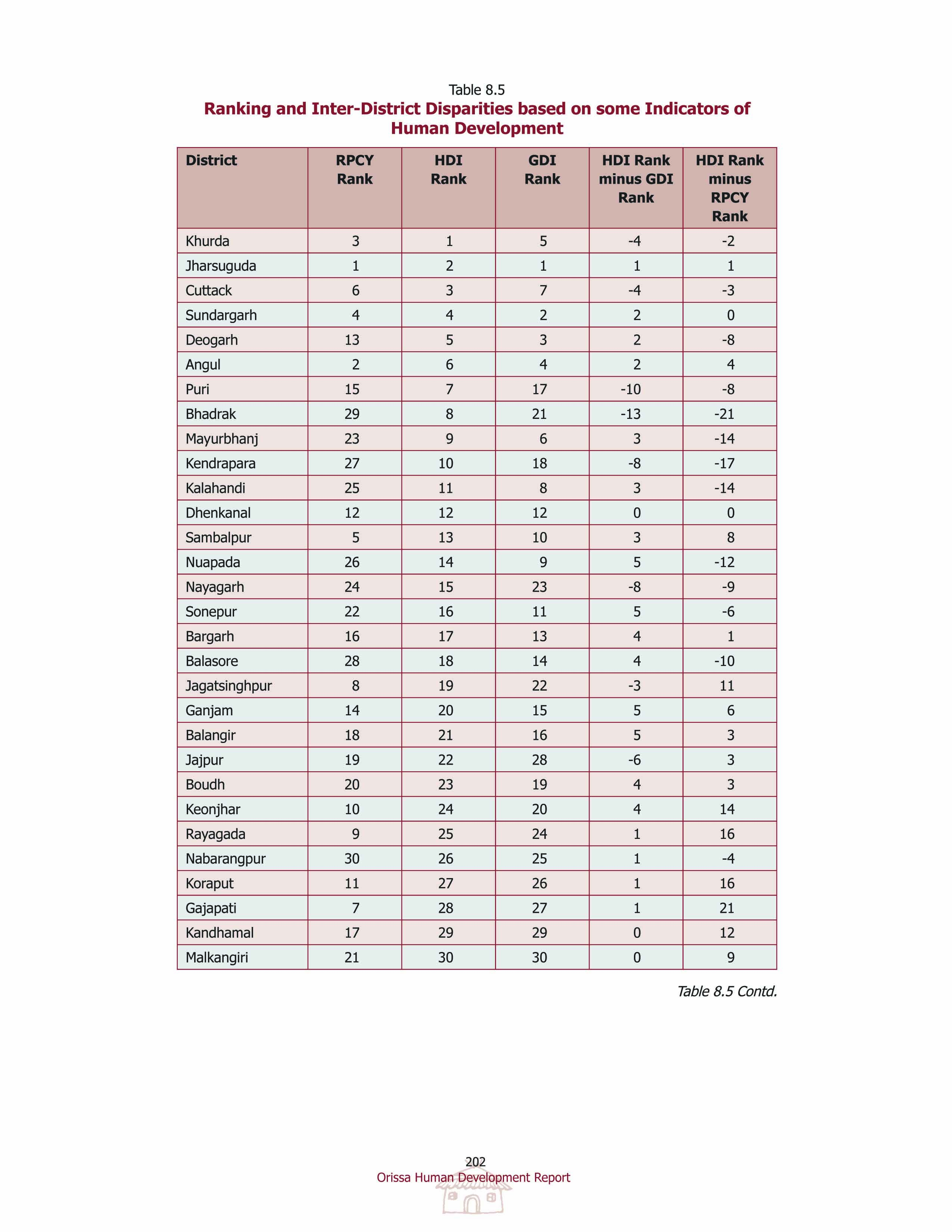
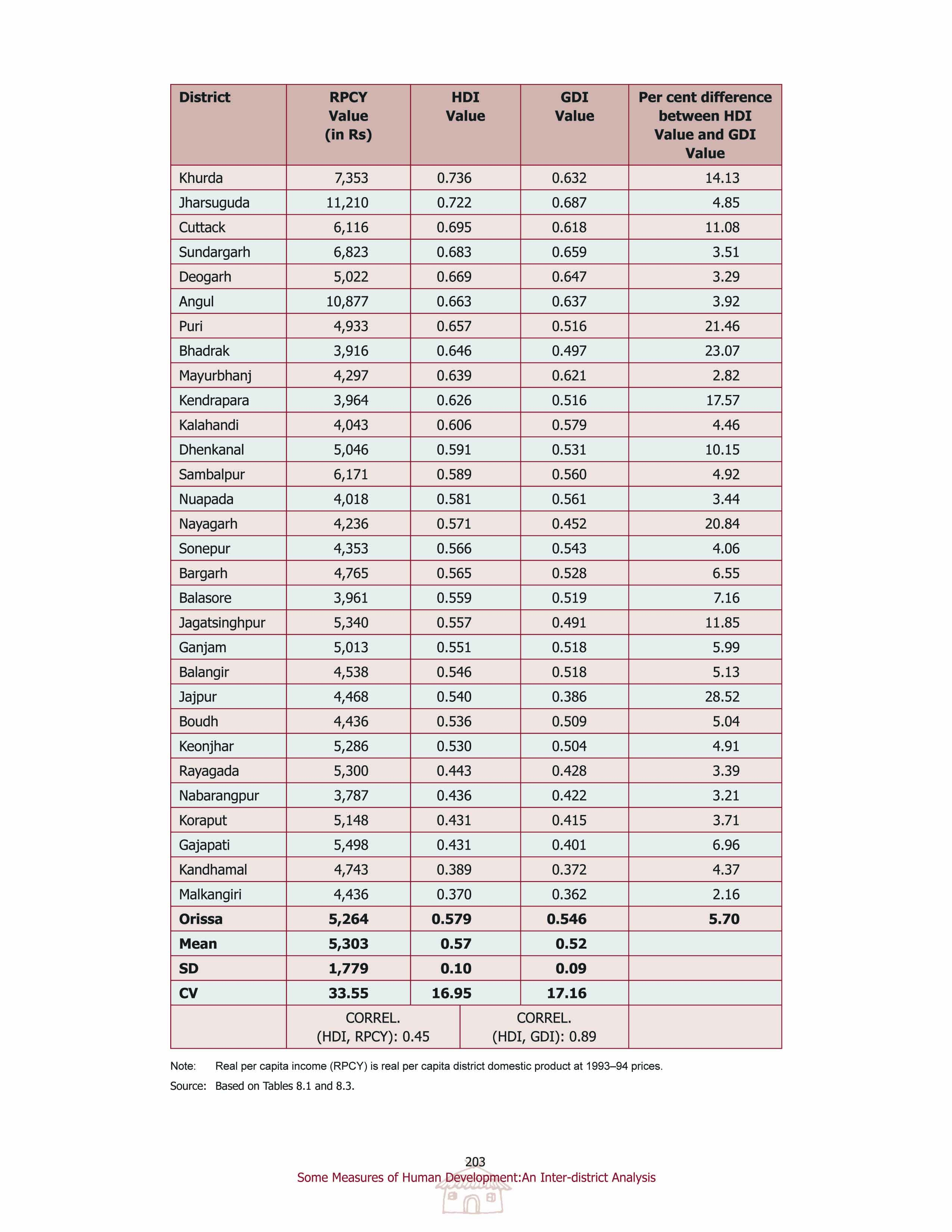 “There is urgent need to improve human development indicators including quality of education, affordable healthcare, food security, improved nutrition levels and safe drinking water”.
“There is urgent need to improve human development indicators including quality of education, affordable healthcare, food security, improved nutrition levels and safe drinking water”.
… “yet substantial historical inter-regional and inter-group variations in the level of living of the citizens persists”
… “Though there has been significant decline in poverty in recent years, the level of poverty still is high.”
Odisha Economy Survey 2015 -16, Govt of Odisha, Planning and Co-ordination Dept.
No matter what kind of poverty measurement criteria one uses, Odisha is among the poorest states in India, along with Bihar, Jharkhand, and Chhatisgarh. Kerala and undivided Andhra Pradesh are the richest. If we translate the Government of Odisha’s 2015-16 statements into layman’s language, it is saying: (1) Odisha’s poverty rate is still very high, (2) There is significant differences in poverty rate among various castes and tribes and regions, and (3) Odisha has to improve its education, nutrition and public health.
If one analyzes the report, there is no mention of how the government of Odisha will take some urgent measures to reduce its high-poverty rate or equalize the significant disparities among its citizens and the extremely high poverty and illiteracy rate among its tribal population. However the report mentions continuation of several existing programmees like – National Rural Employment Guarantee Act (NREGA), National Rural Livelihood Mission ( NRLM) , Aam Admi Bima Yojana (AABY), Swarna Jayanti Sahari Rozgar (SJSR ), Prime Minister’s Employment Generation Programme (PMEGP),and several more with all kinds of acronyms. Unfortunately all these programmes have not worked so far. People of Odisha are still very poor.
Poverty is not just about deprivation. It is equally about other threat and challenges: hunger, under-nutrition, poor health, poor working condition, child labour, voicelessness and many more. People around the world are beginning to understand that poverty is a human right issue. Economic measure does not capture the full picture of poverty. We have to look beyond economics-at deprivation, exclusion, and voicelessness.
In Odisha and in India, resources meant for the poor are siphoned off by politicians, government officials, businessmen and other middle men. From petty bribery to grand larceny of government funds, corruption has deprived the poor and driven resources into the hands of the power elites.
Endemic poverty of Odisha cannot be eliminated easily. There is no single solution to poverty eradication. The paths are many. Some works and others give the appearance of working. What can be wrong with giving subsidized rice to or free grains to the poor? The problem is, most of the subsidized grains meant for the poor end up in the open market for sale. Same is true for all the poverty reductions schemes. Less than 15% of the resources meant for the poor are reaching the poor. The prime example is the status of poverty in the old (KBK) Kalahandi, Balangir and Koraput districts of Odisha. In spite of large amount of central and state funds spent in these districts, since 1980s, there has been minimal improvement in the lives of the people living in these districts. The fact that large numbers of people are leaving these districts every year to find work in Andhra Pradesh or Tamil Nadu is the proof. The inter–district poverty rate difference and the prevalence of high poverty rates among Scheduled Castes and Schedules Tribes, is even a greater problem In Odisha. Eight out of fifty poorest districts in India are in Odisha.
I have done a lot of studies on the topic of poverty reduction since 1996. I have written four books on the topic. I have kept myself well informed about the subject. Based on my understanding and personal experience, I have four recommendations for the government of Odisha, to eliminate Odisha’s abject poverty in three to five years.
1-Direct Conditional Cash Transfer
The government of Odisha should implement Brazil’s Bolsa Familia (Wikipedia.org/bolsafamilia) type of conditional cash transfer programme as soon as feasible. The government should transfer Rs 15,000 to Rs 20,000 per poor family per year for next five years or so. The money should go directly to the bank account or the postal account of the poor family. A money card or a debit card will be even better. There will be only one condition for the cash transfer- that the family will enroll all their eligible children in school and see that they stay in school and get vaccinated. The government can also encourage the poor families to buy a productive asset like a female cow, buffalo, goat, pig or chicken and train them to take care of them.
In 2011, 13.6 million Oriyas were classified as poor. If we assume four persons per household, the number of poor households will be 3.4 million (13.6/4). If the government sends cash of Rs. 15, 000 per year per family, the annual cost will be about 5100 crores rupees. That amount is 12% of Odisha’s 2016-2017 projected budgets of 44,265 crores. The money seems to be a lot, but it is not. To find the money, the government of Odisha can seek central assistance or close some of the so called poverty reduction schemes. Based on the experience of Brazil, Mexico, Turkey and many other countries, the cash transfer programme should work. It will reduce Odisha’s high poverty rate in 4- 5 years.
The only catch is, the money should be deposited directly to the recipient’s bank or postal saving account or given via a debit card. The money should not be distributed through a middle man or agency. When possible the account should be set up in the name of the wife. Women usually do not waste money on drinking or gambling. It will also empower them. Whoever controls the money he or she has the say in how it will be spent.
The Bolsa Familia programme benefited 12 million families and dropped the poverty rate in Brazil by 28% in six years. If properly implemented Odisha has the possibility of doing the same.
The direct cash transfer cannot be seen as panacea of all ills. Generally, the more cash is transferred to the poorest, the more likely it will be effective in reducing severe poverty.
2-Facilitate Migration
Migration and education are two of the oldest actions against poverty. Poor people who are desperate enough to leave their villages and move to a nearby town or city, escape the grinding poverty of their villages. If they continue to stay in their poor villages with limited or no opportunities for work, they starve. As Professor Galbraith said many years ago-“there is nothing great about blue sky and clean air when you are starving”. The educational opportunities and the quality of education at the village level are not that good. When people migrate to a town or city, they usually make a better living (even washing dishes) than they would have stayed in their villages. But more importantly, their children get an education and escape the poverty of their parents and grandparents.
More than 25 million Indians are settled in 110 countries around the world. In 2015, they sent 69 billion dollars to India, accounting for 3% of Indian gross national products. Take the example of the state of Kerala. People from Kerala started migrating to other Indian sates in 1960s and 1970s .In 1970s they started migrating to the Gulf States. In 2008, 22lakhs people from Kerala were working in the Gulf States that are 29 people per 100 households. Each worker sent an average of 52,000 rupees per year to his or her family. The remittance played a major role in enhancing the living standard of the people of Kerala. It contributed to the highest development index (HDI) among the Indian states. Now Kerala has a labour shortage and about 3 lakhs workers from other Indian states including that of Odisha, are migrating to Kerala every year for work.
In early 1950s, people from coastal Odisha migrated to Kolkota for work- mostly as domestic help. But their children got an education and moved into the middle class. Some people from Western and Northen Odisha migrated to Jamsedpur for work. Now educated Oriyas in large number are working in Bengalaru, Hyderabad, Chennai, Mumbai, Pune and New Delhi. Oriya labourer from Western Odisha are migrating in large numbers to Tamil Nadu, Andhra Pradesh, Gujrat, Kerala and Chatisgarh.
The government of Odisha has no real figure and does not really know how many poor Oriyas are migrating every year to other states for work. The government always states a low number to save its face as it reflects badly on its performance. Most researchers believe that the number is close 10 lakhs or more per year. In one study of Gaisilet block in Bargarh district, out of total population of 87,163 in 12 villages, 47,205 people were seasonal migrants.
On the plus side, one study shows that remittance from Surat, Gujrat to Odisha alone was more than 2,000 crores rupees per year.
Instead of denying or minimizing the issue, the government of Odisha should take the following steps to facilitate migration from rural to urban areas, from Odisha to other states, to the Gulf States and to other foreign countries.
- The government should officially acknowledge that migration is good for the state and adopt pro- migration policies.
- It should open large number of recruitment centers in all parts of the state.
- It should give one time allowance of 15,000 to 20,000 rupees to each migrating family to help them in their migrating cost. This will help the poor not to be bonded to a middle man who usually loans them the money and takes advantage of them.
- The government should protect them with BPL health insurance, workers’ compensation and some life insurance.
- Migration is good for the migrants and their families who are left behind. Like the state of Kerala the government Odisha should do everything possible to facilitate migration of Oriyas to other states and to foreign countries.
3-Education
Quality public education is core strategy in fighting poverty everywhere. Not only education is important in fighting poverty, it is also key to wealth creation. Without creating wealth poverty cannot be eradicated. No country has succeeded in reducing poverty if it has not educated its people. All experts agree that universal primary education is central to fight against poverty. Girl’s education is even more important.
Poor children have numerous disadvantages in relation to their better-off counterparts. They are less healthy, their language skills less developed (a factor that has negative impact on learning), and they are less well-equipped -socially, emotionally and physically to learn. Many of the poor children are forced to do dangerous work just to supplement the income of their families.
Girl’s Education
All developmental experts agree that the potential benefits of girls’ education is even greater than that of boys’ education. When you educate a boy, you educate one person, but when you educate a girl, it benefits the whole family. The benefits of girls’ education are many: decrease pregnancy rate, increase productivity, reduction of under 5 mortality rates, gender equality in family decision making and many more.
The link between female literacy and decrease fertility is quite clear. Educated girls delay marriage. When they have children, they space them better. They also exercise better freedom to use or not use contraception, to have or not to have abortion.
Women who are educated are more likely to work outside the home. Women who have independent income have higher social standing and more likely to run for political office.
In developing countries the monetary and social returns of primary education are much higher as compared to that of higher education. It has been found that monthly earnings of an individual worker can increase by 7to10% for each additional year of schooling.
The government of Odisha should take the following steps to expand the scope of education in Odisha:
- Compulsory enrollment of all children in school at least up to 6th grade.
- More than 40% of Oriya children are under nourished. Provision of breakfast along with the mid-day meals will help in reducing the high malnutrition and under nutrition rate among the children of Odisha.
- Poor families receiving the direct cash transfer should be required to keep their children at school.
- Improve learning by improving the school’s infrastructure (toilets, hostels, libraries, and computers), reducing students’ dropout rate and absentee rate.
- Make sure that all the teachers attend schools and teach. If they are absent without cause, they should be fired.
- Give deworming medicine, vitamin A and iron tablet to all children. It has been shown that inexpensive deworming medicine if given to children twice a year improves their school attendance rate.
- Every student is not a college material. Students who cannot attend college should be provided with vocational education (electrician, plumber, carpenter etc) with minimal cost or at no cost.
4-Provision of Basic Healthcare
By all the criteria of measurements, Infant Mortality Rate, Maternal Mortality Rate and Under -5 Mortality Rate, Odisha’s healthcare indices are one of the worst among the Indian states. Odisha’s Infant Mortality Rate (Nos of death per 1000 live births), in 2014 was 40 compare to 12 for the state of Kerala.
The relationship between health and poverty is well established. There is also a strong correlation between nutrition, health and learning. Health or lack of diseases depends among other things on quantity and quality of diet, safe drinking water, sanitary living conditions, and availability of doctors, nurses, hospital and low cost essential drugs. In Odisha diarrhea (even occasional deadly cholera), tuberculosis, malaria, leprosy, filariasis, hook worms, round worms are quite common. More than 60% of pregnant women are anemic and undernourished. Anemic and poorly nourished mothers give birth to low birth weight infants.
As most people in Odisha have no health insurance, even middle class people can become poor because unexpected medical cost. For the poor the situation is much worse. If they have any savings they spend it on health care and many of them go into debt which they cannot pay.
The government of Odisha can take the following steps to provide basic healthcare to all its citizens:
- Put emphasis on preventive health care rather than acute care. Most of the present healthcare budget is being spent on treatment of diseases rather than preventing them. Prevention is much more cost effective than treatment.
- Supply safe drinking water to all households. Provide chlorine tablets, or bottled water or tap water to all, no matter where they reside. It is an absolute must to prevent many of the diseases.
- Provide mid-day meal and breakfast to all children. It will reduce the high under nutrition rate of all Oriya children. Well nourished children are less likely to catch much infectious disease and die from them.
- Immunize all children.
- Provide health insurance to all. Government should pay for the poor and non poor should be charged a graduated premium based on their income. Many of the Indian states are all ready doing it including Chhattisgarh and Andhra Pradesh.
- Create a cadre of village health workers in the model of BRAC ( www. brac.net) of Bangladesh. They will provide primary health care at the village level at minimal cost.
- Improve infrastructures ( CAT scan and MRI, Lab) of all the government medical college hospitals and the district hospitals and hand them to local non-profit board to manage them.
- Government should provide financial incentives (land and monetary grants depending on location) to private sector to build hospitals and clinics. In return the promoters of these hospitals will agree by contract with the state government, to provide care to at least 30% of BPL and poor patients free.
Conclusion
“Indeed, there is no such thing as freedom for a man who is starving or for a country who is poor.” – Jawarlal Nehru, 1950.
Odisha is blessed with rich natural resources – minerals and forest, long coast-line and fertile river valleys. Its population density is relatively low, 270 per sq. km compare to 860 for Kerala. But Odisha’s poverty ranking and developmental ranking (Human Development Index) is 22 out of 23 major states in India. In spite of more than 30 years of stable governments under Congress and BJD, Odisha’s low ranking has not changed.
Odisha is making progress in poverty reduction but slowly, slower than states like Andhra Pradesh, Tamil Nadu, Gujrat and Kerala. In spite of decent industrial growth (because of plenty of coal and minerals) its high poverty rate persists. Abject poverty, illiteracy, high infant and maternal mortality and under nutrition rates among its Scheduled Castes and Scheduled Tribes population is unacceptably high.
Odisha should do everything possible to grow its economy. Without creating wealth there will be nothing to distribute. Odisha’s industrial growth is benefiting the middle class -people with skills and education and living in the urban areas. But the lives of the rural poor are not changing that much.
In this article I have suggested four steps- direct cash grant to the poor, facilitating migration, primary education for all, especially girls, and provision of basic healthcare. Education and healthcare will reduce poverty rates but they will take time. Large scale migration from rural areas is already happening because of extreme poverty. Instead of denying that migration is happening the government of Odisha should openly facilitate it. Most people are afraid to leave the villages where they have grown up for an uncertain life in another state or country. But if they are bold or desperate enough to migrate, at least their children escape the poverty of their parents.
The direct cash grant to the poor is not a new concept. It has been suggested since the 18th century by many western thinkers. Governments of Brazil, Mexico, Turkey and many South American countries have successfully implemented it. Most of the developed countries in the world have some form of direct cash payment to their elderly, disabled and unemployed. Most developing and poor countries are not doing it with the excuse that they do not have the resources. However most of them find money to build show- projects like- fancy stadiums, air-ports, and housing for the ruling class. They also have multiple schemes for development so that the ruling class can siphon off most of the money meant for the poor.
The Government of India, Ministry of Finance, is exploring how India might replace its various welfare programmes with a universal basic income, or a uniform stipend to be paid to every adult and child, poor or rich. It will be better than the current antipoverty programmes, which are plagued by waste, corruption and abuse. The government of Odisha, should not wait any longer for the central government to act. We do not know whether Delhi will act on the plan or not or when. Odisha government should act now. It is quite doable if the government shall have the will to do it. IT IS NOT A QUESTION OF MONEY BUT, WILL. In one step, Odisha will eliminate abject poverty from the state. The government should trust the poor how best they will spend their money rather than trusting the Babus. Multiple studies around the world have shown that, the poor do a much better job of properly spending their money than their government.
The responsibility of reducing poverty in Odisha is all ours – politicians, officials, NGOs and all citizens. Those of us, who are fortunate enough to have moved out of poverty, should do our part to help other Oriyas to do the same. We can start with helping one person or one family at a time. After all as the good book says,” We are all our brothers’ keepers”.
“To end poverty is to win freedom” – Amartya Sen, Nobel-Laureate in Economics.
Dr Saheb Sahu is a farmer’s son, educated at C.S. Zila School, G.M.College and A.I.I.M.S (New Delhi). He has been settled in USA since 1970. He is a former Managing Director of Kalinga Hospital and an expert member of WODC. He is the author of 3 books on poverty.
Sources
- Deaton Angus, The Great Escape, Health, Wealth, and Origin of Inequality. Princeton: Princeton University Press, 2013
- 2- Dre”ze Jean, Sen Amartya, Indian Economic Development and Social Opportunity. Oxford: Oxford University Press, 1995
- Khan Irene, The Unheard Truth, Poverty and Human Rights. New York: W. W. Norton and Company, 2009
Websites:
1- Wikipedia-Poverty in India.wikipedia.org/poverty in India, Nov 2016
2- Govt of Odisha-2015-16 Economy Survey. www.odisha.gov.in/pc/download/2015-16pdf
3- Niti Aayog: niti.gov.in

